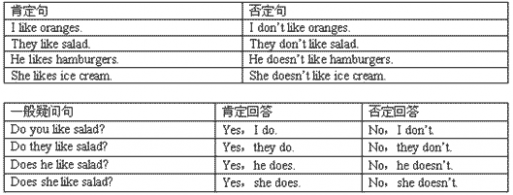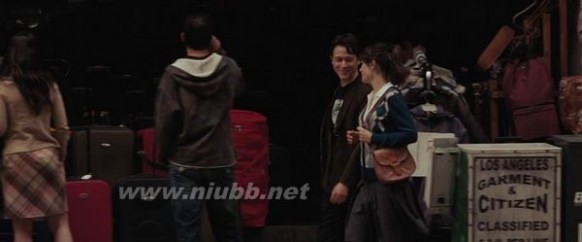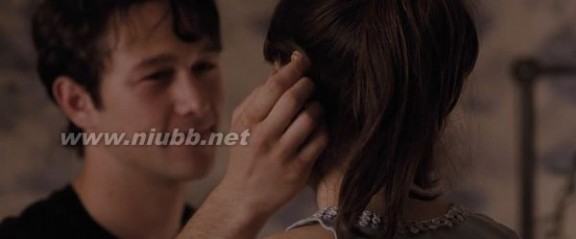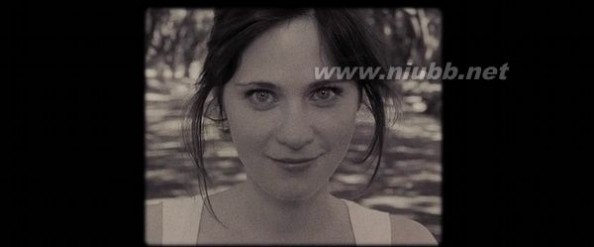一 : —When will Diana arrive?—Oh, she . She is in the m
| —When will Diana arrive? —Oh, she . She is in the meeting room now.
|
| D |
试题分析:句意:—Diana什么时候到达?—哦,她已经到了。她现在在会议室。根据句意:在对话之前,Diana已经到了,而且在会议室。表示在过去某一事件发生的某一动作对现在造成了影响或产生了结果,用现在完成时,故选D。 |
考点:
考点名称:过去进行时过去进行时:过去进行时和一般过去时的区别:
一、二者概念理解
一般过去时叙述旧事,过去进行时描述背景。
A、一般过去时
1.过去状态、动作或事件
He went to Beijing the other day.(带具体时间)
2.过去的习惯
a would ,used to与过去时
would 表间断性不规则的习惯,常带频率时间
used to 表一贯性有规律的习惯
They used to meet and would sometimes exchange one or two words.
He smoked a lot two years ago. (过去行为)
bWould 用于文中不用于句首,只表过去习惯。
Used to 表今昔对比的含义,叙述习惯动作可与would 换用。
When he was a boy , he would often go there . (叙述过去)
She isn't what she used to be. (今昔对比)
c 表示状态时一般只用used to
Tom used to be fat /There used to stand a tree there. (状态)
dwas (were) used to +ving表示“合适于,适应于…..”
He used to work at night . (“习惯”表经常)
He was used to working at night. (习惯表适应)
3.过去的经历,平行动作,依此事件用一般过去时。
He sat there and listened to the radio.(依此发生)
4.客气委婉的语气,用于情态动词,助动词和want , wonder , hope 等
How did you like the film? / Could you help me?
B. 过去进行时
1.在过去某阶段或某一时刻正在发生
What were you doing at 8:30 last night? (过去某时刻正在发生)
2.性动词用过去进行时表示按计划、打算
During that time he was going with us.(表示打算)
3.lways ,often ,usually 等连用表喜爱,讨厌等感情色彩。
He was always Changing his mind.
二、区别
A. 进行时表某一行为的“片断”一般时表示行为的“整体”和存在的状态。
I was reading the book at that time. (未读完,“读”的片段)
I read the book yesterday. (已读完,表整个“读”)
B、一般持续时间状语多与进行时连用
It was raining all night.(优先用was raining ,rained 为持续动词,故也可使用)
He was writing a letter the whole of afternoon. (短暂动词与持续时间连用,表反复,连续发生,不可用一般过去时)
C、while 时间状语从句中用短暂动词时只能用进行时。
例:He broke a chair while he was jumping up and down.
D、While 所在主从句动作大致持续相等时主从句一般都用进行时,但若是持续动词可都用一般过去时,两个动作一长一短时短的用一般时,长的用进行时。
I was cooking the dinner while he was playing the piano.(平行)
I cooked the dinner while he played the piano.
I saw him while I was walking to the station.
过去进行时的基本用法:
过去进行时的基本用法主要表示过去某一时间正在进行的动作。如:
He fell asleep when he was reading. 他看书时睡着了。
2. 用过去进行时表示现在主要是为了使语气委婉、客气。如:
I was wondering if you could give me a lift. 我不知你能否让我搭一下车。
【注】一般过去时也有类似用法,但比较而言,用过去进行时显得更客气,更不肯定。
3. 过去进行时表示感情色彩与现在进行时相似,过去进行时也可表示满意、称赞、惊讶、
厌恶等感情色彩,也通常与 always, forever, continually等副词连用。如:
They were always quarrelling. 他们老是吵架。
4. 动词be的过去进行时动词be的进行时也可表示过去一时的表现或暂时的状态。
比较:He was friendly. 他很友好。(指过去长期如此)
He was being friendly. 他当时显得很友好。(指当时一时的表现)
特殊用法
1、当句子意思很清楚时,我们也可以把两个动词都换成一般过去时
We listened carefully when the teacher read the text. 老师读课文时,我们都仔细地听着。
2、表示按计划、安排过去将要发生的事。
用于come,go,leave,start,arrive等表示位置转移的动词时,也可以用过去进行时表示过去将要发生的动作。
如:He told me that he was going soon. 他告诉我他很快就要走了。
3、表示故事发生的背景。
It was snowing as the medical team made its way to the front.
那支医疗小组往前线行进时,天正下着雪。
4、表示一个新的动作刚刚开始。
过去进行时可用来引出一个新的动作,这种用法颇有点儿像镜头转换。
Five minutes later,he stood in the doorway smoking a cigarette.
5分钟后,他已站在门口抽着烟。
5、过去进行时还可和when结构遥相呼应,含有意外之意。
I was walking in the street when someone called me.
我正在街上走时突然有人喊我。
6、用来陈述原因或用作借口。
She went to the doctor yesterday. She was having a lot of trouble with her heart.
她昨天去看病了。她患了很严重的心脏病。
7、与always,constantly等词连用,表示感情色彩。
The girl was always changing her mind.
这女孩老是改变主意。
一般现在时的句子转换:
(1)当句子中有be动词或情态动词时,则把be动词或情态动词(can,could等等)提到主语的前面变成疑问句;在be动词或情态动词后面加not变成否定句.
例:
①陈述句:She is a student.
疑问句→ Is she a student?
否定句→ She is not a student.
②陈述句:I can swim.
疑问句→ Can you swim
否定句→ I can not swim.
(2)当句子中即没有be动词,也没有情态动词时,则在主语前加助动词do (you,以及复数),does(单数she,he,it)变成问句;
在主语后谓语动词前加助动词don’t(I,you,以及复数), doesn’t(单数she,he,it)变成否定句,助动词后的动词要变成动词原形。
例:
①陈述句:We get up at 7:00 every morning.
疑问句→Do you get up at 7:00 every morning?
否定句→We don’t get up at 7:00 every morning.
②陈述句:She has a little brother.
疑问句→ Does she have a little brother?
否定句→ She doesn’t have a little brother.
一般现在时的表达方法:
主要通过谓语动词的变化和用时间词语来表示,其中最主要的是谓语动词的变化。现在一般时动词变化的规则是:
1.如果主语是名词复数和第一人称I、 we ,谓语动词不用做任何变化,即仍然用动词原形表示:
We usually go to school at 7:30. 我们通常7:30上学去。[go]
My parents give ten yuan to my sister every week.我父母每星期给我妹妹十元钱。[give]
2.主语是任何一个单数名词或者是第三人称单数,谓语动词要进行必要的变化。特别提一点:不可数名词也算作单数处理。
3.谓语动词的变化规律是:
第三人称单数的构成见下表:
词 | 构成 | 举例 | |
一般情况 | 词尾+s | 动词原形 | 第三人称单数 |
work(工作) | works | ||
以-ch, -sh, s, x, o结尾 | 词尾+es | teach(教) | teaches |
以“辅音字母+y”结尾 | 变y为i,再加es | fly(飞翔) | flies |
特殊变化的词:
be (是) - am,is,are
I am
she/he/it,名词单数都用 is
we,you,they,名词复数都用are
have (有) - have,has
I,we,you,they,名词复数都用have
she/he/it is,名词单数都用 has
助动词,不论单复数、不论什么人称都没有变化,都用 can,may,must,need,ought to 等。
而且,句子中有了助动词,谓语动词就不需要有任何变化了,即用动词原形表示。例:
We have six classes every day. 我们每天上六节课。
I often get up at 6:30. 我经常6:30起床。
Jack likes Chinese food very much.杰克很喜欢中国饮食。
We can see some pictures on the wall. 我们能看到墙上的画。
4.一般现在时常用的时间词语
常用于一般现在时的词语有 sometimes/usually/often/every day(week,year)/ now/always 等。
这些时间词语只是辅助作用,这些词语也可用于其它的时态,所以谓语动词变化才是最关键的。
注意:当表现强烈的感情色彩时,尽管有如 always/never/seldom 等频率副词,但一般在频率副词前加上be动词,后面变为动词的现在分词形式。
例:My father lose his key again. He is always losing his key.

一般现在时中当主语为第三人称单数的时,动词上要改为第三人称单数形式。
过去完成进行时:
就是相对过去的某个时刻来说已经对现在有直接影响并且还在进行的动作。放在间接引语或虚拟语气中时它的时态不能再向前推,向后推是现在完成进行时。
过去完成进行时是由"had been+现在分词"构成。
例如:She had been suffering from a bad cold when she took the exam.
她在考试之前一直患重感冒。
特点:
1.这种时态很少用在否定句中,而多以过去完成时代替:
He had not practised English for many years.(普通说法)
He had not been practising English for many years.(少见)
2.这种时态还可用在said,supposed等引起的间接引语中,代替现在完成进行时:
He said,“I have been speaking to John.”= He said that he had been speaking to John.
He thought,“She was watching me when I passed.”= He thought that she had been watching him when he had passed.
3.过去完成进行时经常与现在完成进行时混淆。
现在完成进行时 (The present perfect progressive) 由 have/has been +-ing 分词构成;
过去完成进行时( The past perfect progressive tenses )由 had been +-ing 分词构成.
现在/过去完成进行时的用法:
A. 在某段时间内一直进行的动作用现在完成进行时来强调动作在某段时间里的持续性.
动作通常有"现在"的结果,要根据上下文来确定到"现在"为止,动作是否还在继续进行.
同样,过去完成进行时表示在过去更早时间内进行的动作,并对过去某一时刻产生结果。
B.表示重复动作的现在/过去完成进行时
我们也可以用完成进行时形式来表示现在或过去经常重复的动作
注意:过去完成进行时和过去完成时类似,需要有过去这一时间点。
二 : She's the one……
(500) Days of Summer |
 |
 |
 |
 |
 |
 |
 |
 |
 |
 |
 |
 |
 |
 |
 |
 |
 |
扩展:she歌曲 / 田馥甄 / 任家萱
三 : —When will Diana arrive?—Oh, she . She is in the
| —When will Diana arrive? —Oh, she . She is in the meeting room now.
|
| D |
试题分析:句意:—Diana什么时候到达?—哦,她已经到了。她现在在会议室。根据句意:在对话之前,Diana已经到了,而且在会议室。表示在过去某一事件发生的某一动作对现在造成了影响或产生了结果,用现在完成时,故选D。 |
考点:
考点名称:过去进行时过去进行时:过去进行时和一般过去时的区别:
一、二者概念理解
一般过去时叙述旧事,过去进行时描述背景。
A、一般过去时
1.过去状态、动作或事件
He went to Beijing the other day.(带具体时间)
2.过去的习惯
a would ,used to与过去时
would 表间断性不规则的习惯,常带频率时间
used to 表一贯性有规律的习惯
They used to meet and would sometimes exchange one or two words.
He smoked a lot two years ago. (过去行为)
bWould 用于文中不用于句首,只表过去习惯。
Used to 表今昔对比的含义,叙述习惯动作可与would 换用。
When he was a boy , he would often go there . (叙述过去)
She isn't what she used to be. (今昔对比)
c 表示状态时一般只用used to
Tom used to be fat /There used to stand a tree there. (状态)
dwas (were) used to +ving表示“合适于,适应于…..”
He used to work at night . (“习惯”表经常)
He was used to working at night. (习惯表适应)
3.过去的经历,平行动作,依此事件用一般过去时。
He sat there and listened to the radio.(依此发生)
4.客气委婉的语气,用于情态动词,助动词和want , wonder , hope 等
How did you like the film? / Could you help me?
B. 过去进行时
1.在过去某阶段或某一时刻正在发生
What were you doing at 8:30 last night? (过去某时刻正在发生)
2.性动词用过去进行时表示按计划、打算
During that time he was going with us.(表示打算)
3.lways ,often ,usually 等连用表喜爱,讨厌等感情色彩。
He was always Changing his mind.
二、区别
A. 进行时表某一行为的“片断”一般时表示行为的“整体”和存在的状态。
I was reading the book at that time. (未读完,“读”的片段)
I read the book yesterday. (已读完,表整个“读”)
B、一般持续时间状语多与进行时连用
It was raining all night.(优先用was raining ,rained 为持续动词,故也可使用)
He was writing a letter the whole of afternoon. (短暂动词与持续时间连用,表反复,连续发生,不可用一般过去时)
C、while 时间状语从句中用短暂动词时只能用进行时。
例:He broke a chair while he was jumping up and down.
D、While 所在主从句动作大致持续相等时主从句一般都用进行时,但若是持续动词可都用一般过去时,两个动作一长一短时短的用一般时,长的用进行时。
I was cooking the dinner while he was playing the piano.(平行)
I cooked the dinner while he played the piano.
I saw him while I was walking to the station.
过去进行时的基本用法:
过去进行时的基本用法主要表示过去某一时间正在进行的动作。如:
He fell asleep when he was reading. 他看书时睡着了。
2. 用过去进行时表示现在主要是为了使语气委婉、客气。如:
I was wondering if you could give me a lift. 我不知你能否让我搭一下车。
【注】一般过去时也有类似用法,但比较而言,用过去进行时显得更客气,更不肯定。
3. 过去进行时表示感情色彩与现在进行时相似,过去进行时也可表示满意、称赞、惊讶、
厌恶等感情色彩,也通常与 always, forever, continually等副词连用。如:
They were always quarrelling. 他们老是吵架。
4. 动词be的过去进行时动词be的进行时也可表示过去一时的表现或暂时的状态。
比较:He was friendly. 他很友好。(指过去长期如此)
He was being friendly. 他当时显得很友好。(指当时一时的表现)
特殊用法
1、当句子意思很清楚时,我们也可以把两个动词都换成一般过去时
We listened carefully when the teacher read the text. 老师读课文时,我们都仔细地听着。
2、表示按计划、安排过去将要发生的事。
用于come,go,leave,start,arrive等表示位置转移的动词时,也可以用过去进行时表示过去将要发生的动作。
如:He told me that he was going soon. 他告诉我他很快就要走了。
3、表示故事发生的背景。
It was snowing as the medical team made its way to the front.
那支医疗小组往前线行进时,天正下着雪。
4、表示一个新的动作刚刚开始。
过去进行时可用来引出一个新的动作,这种用法颇有点儿像镜头转换。
Five minutes later,he stood in the doorway smoking a cigarette.
5分钟后,他已站在门口抽着烟。
5、过去进行时还可和when结构遥相呼应,含有意外之意。
I was walking in the street when someone called me.
我正在街上走时突然有人喊我。
6、用来陈述原因或用作借口。
She went to the doctor yesterday. She was having a lot of trouble with her heart.
她昨天去看病了。她患了很严重的心脏病。
7、与always,constantly等词连用,表示感情色彩。
The girl was always changing her mind.
这女孩老是改变主意。
一般现在时的句子转换:
(1)当句子中有be动词或情态动词时,则把be动词或情态动词(can,could等等)提到主语的前面变成疑问句;在be动词或情态动词后面加not变成否定句.
例:
①陈述句:She is a student.
疑问句→ Is she a student?
否定句→ She is not a student.
②陈述句:I can swim.
疑问句→ Can you swim
否定句→ I can not swim.
(2)当句子中即没有be动词,也没有情态动词时,则在主语前加助动词do (you,以及复数),does(单数she,he,it)变成问句;
在主语后谓语动词前加助动词don’t(I,you,以及复数), doesn’t(单数she,he,it)变成否定句,助动词后的动词要变成动词原形。
例:
①陈述句:We get up at 7:00 every morning.
疑问句→Do you get up at 7:00 every morning?
否定句→We don’t get up at 7:00 every morning.
②陈述句:She has a little brother.
疑问句→ Does she have a little brother?
否定句→ She doesn’t have a little brother.
一般现在时的表达方法:
主要通过谓语动词的变化和用时间词语来表示,其中最主要的是谓语动词的变化。现在一般时动词变化的规则是:
1.如果主语是名词复数和第一人称I、 we ,谓语动词不用做任何变化,即仍然用动词原形表示:
We usually go to school at 7:30. 我们通常7:30上学去。[go]
My parents give ten yuan to my sister every week.我父母每星期给我妹妹十元钱。[give]
2.主语是任何一个单数名词或者是第三人称单数,谓语动词要进行必要的变化。特别提一点:不可数名词也算作单数处理。
3.谓语动词的变化规律是:
第三人称单数的构成见下表:
词 | 构成 | 举例 | |
一般情况 | 词尾+s | 动词原形 | 第三人称单数 |
work(工作) | works | ||
以-ch, -sh, s, x, o结尾 | 词尾+es | teach(教) | teaches |
以“辅音字母+y”结尾 | 变y为i,再加es | fly(飞翔) | flies |
特殊变化的词:
be (是) - am,is,are
I am
she/he/it,名词单数都用 is
we,you,they,名词复数都用are
have (有) - have,has
I,we,you,they,名词复数都用have
she/he/it is,名词单数都用 has
助动词,不论单复数、不论什么人称都没有变化,都用 can,may,must,need,ought to 等。
而且,句子中有了助动词,谓语动词就不需要有任何变化了,即用动词原形表示。例:
We have six classes every day. 我们每天上六节课。
I often get up at 6:30. 我经常6:30起床。
Jack likes Chinese food very much.杰克很喜欢中国饮食。
We can see some pictures on the wall. 我们能看到墙上的画。
4.一般现在时常用的时间词语
常用于一般现在时的词语有 sometimes/usually/often/every day(week,year)/ now/always 等。
这些时间词语只是辅助作用,这些词语也可用于其它的时态,所以谓语动词变化才是最关键的。
注意:当表现强烈的感情色彩时,尽管有如 always/never/seldom 等频率副词,但一般在频率副词前加上be动词,后面变为动词的现在分词形式。
例:My father lose his key again. He is always losing his key.

一般现在时中当主语为第三人称单数的时,动词上要改为第三人称单数形式。
过去完成进行时:
就是相对过去的某个时刻来说已经对现在有直接影响并且还在进行的动作。放在间接引语或虚拟语气中时它的时态不能再向前推,向后推是现在完成进行时。
过去完成进行时是由"had been+现在分词"构成。
例如:She had been suffering from a bad cold when she took the exam.
她在考试之前一直患重感冒。
特点:
1.这种时态很少用在否定句中,而多以过去完成时代替:
He had not practised English for many years.(普通说法)
He had not been practising English for many years.(少见)
2.这种时态还可用在said,supposed等引起的间接引语中,代替现在完成进行时:
He said,“I have been speaking to John.”= He said that he had been speaking to John.
He thought,“She was watching me when I passed.”= He thought that she had been watching him when he had passed.
3.过去完成进行时经常与现在完成进行时混淆。
现在完成进行时 (The present perfect progressive) 由 have/has been +-ing 分词构成;
过去完成进行时( The past perfect progressive tenses )由 had been +-ing 分词构成.
现在/过去完成进行时的用法:
A. 在某段时间内一直进行的动作用现在完成进行时来强调动作在某段时间里的持续性.
动作通常有"现在"的结果,要根据上下文来确定到"现在"为止,动作是否还在继续进行.
同样,过去完成进行时表示在过去更早时间内进行的动作,并对过去某一时刻产生结果。
B.表示重复动作的现在/过去完成进行时
我们也可以用完成进行时形式来表示现在或过去经常重复的动作
注意:过去完成进行时和过去完成时类似,需要有过去这一时间点。
四 : April is the ________ month of the year. [ ]A. thi
| April is the ________ month of the year. |
| [ ] |
| A. third B. fifth C. seventh D. fourth |
| D |
考点:
考点名称:序数词序数词:序数词的读法与写法:
序数词写法:
1 first ;2 second; 3 third ;4 fourth; 5 fifth ;
6 sixth ;7 seventh; 8 eighth;9 ninth ;10 tenth ;
11 eleventh ;12 twelfth ;13; thirteenth ;14 fourteenth;15 fifteenth
16 sixteenth ;17 seventeenth ;18 eighteenth;19 nineteenth;
20 twentieth ;30 thirtieth ;40 fortieth ;50 fiftieth ;60 sixtieth ;70 seventieth;80 eightieth; 90 ninetieth
多位序词:
由基数词的形式变结尾部分为序数词形式来表示。
one hundred and twenty-first 第一百二十一
one thousand three hundred and twentieth 第一千三百二十
two hundred and fifty-second 第二百五十二
缩写:
有时,序数词可以用缩写形式来表示。主要缩写形式有:
first——1st ;second——2nd ;third——3rd; fourth——4th ;sixth——6th ;twentieth——20th;twenty-third——23rd
其中lst,2nd,3rd为特殊形式,其它的都是阿拉伯数字后加上th。
序数词前不加the的情况:
在英语中,使用序数词时前面要加定冠词 the,但是,在下面的情况下则不加 the:
1.当序数词前有形容词性物主代词或名词所有格修饰时,序数词前不用 the。
Mother was my first teacher in my life.妈妈是我生命中的第一个老师。
Tom is Lily's third boyfriend. 汤姆是莉莉的第三个男朋友。
2.当表达分数时,序数词前不用 the。
One fifth of the students here are from the country. 这儿1/5的学生来自农村。
Three fourths of the students here are from the country. 这儿的3/4的学生来自农村。
3.当表达“又一,再一”时,序数词前不用 the,但可加不定冠词。
Please give me a second chance. 请再给我一次机会。
The poor woman had a third baby. 那个可怜的妇女又生了第三个宝宝。
4.当表达“年月日”时,尤其在朗读时,序数词前要加 the。
He was born on June 6th, 1974. 他出生在1974年6月6日。
5.当序数词在句中作状语时,序数词前不用 the。
Who got there second? 谁第二个到那儿的?
I finished the work first. 我最先完成那项工作。
6. 当表达考试(比赛等)中获得的名次时,序数词前不用 the。
She stands first in her class. 她在班上成绩排名第一。
基数词变序数词的口诀:
基变序,有规律,词尾加上-th。
一,二,三,特殊记,词尾字母t,d,d。
八去t,九除e,ve要用f替,ty将y变成i,th前面有个e。
若是碰到几十几,前用基来后用序。
整十基数变序数,先把ty变成tie,要是遇上两位数,十位基数,个位序,th最后加上去。
或者一,二,三变字体;th从4上起;8加h,9减e;用f 代ve;ty变为tie。
序数词的语法功能及用法:
序数词在句中可作主语、宾语、定语和表语。
The second is what I really need. 第二个是我真正需要的。(作主语)
He choose the second. 他挑选了第二个。(作宾语)
We are to carry out the first plan. 我们将执行第一个计划。(作定语)
She is the second in our class.在我们班她是第二名。(作表语)
注:序数词在使用时,通常前面要加定冠词 the;但是如果序数词前出现不定冠词a或an时,则表示“再—”,“又—”。
We'll go over it a second time. 我们得再念第二遍。
We've tried it three times.Must we try it a fourth time? 我们已经试过三遍了,还必须试一次(第四次)吗?
表示顺序的序数词
只需将基数词放在它所修饰的名词之后即可,不需要添加定冠词。
the first lesson——Lesson One the fifth page——Page 5(five)
the twenty-first room——Room 21(twenty-one)
五 : 阅读理解。 Listening test is one of the important parts
| 阅读理解。 |
| Listening test is one of the important parts of the English exam. Here are some tips for you. Before you start to listen, you need to relax. Don't be nervous. And try to read the questions. These questions usually help you understand the dialogue or the passage. Then listen carefully to the first sentence. It usually tells you the main idea of the passage. When you're listening, try to do some thinking and take some notes (笔记), such as: ·What happened? ·When, where, and how? ·What does the speaker want to tell us? In this way, you may understand the passage better. Please remember not to think about one or two words for a long time. When you hear some words you don't know, don't spend too much time on them. Very often, you'll find out what they mean later when you go on with the listening. 根据短文内容,选择最佳答案。 1. This passage mainly talks about _____. A. tips on listening B. tips on speaking C. tips on reading D. tips on writing 2. It's better for you to keep _____ when you start to have a listening test. A. excited B. relaxed C. nervous D. worried 3. We should listen to the first sentence carefully, because it usually tells us _____. A. the answers to the questions B. where to write the answers C. the main idea of the passage D. how much time left(剩余) for the listening test. 4. When you're listening, it's important for you to _____. A. remember every word B. take some notes C. understand all the words D. think about one words for a long time 5. The _____ usually help(s) us understand the passage better. A. questions B. first sentence C. notes D. A, B and C |
| 1-5 ABCBD |
考点:
考点名称:科教类阅读科普类的阅读:61阅读| 精彩专题| 最新文章| 热门文章| 苏ICP备13036349号-1